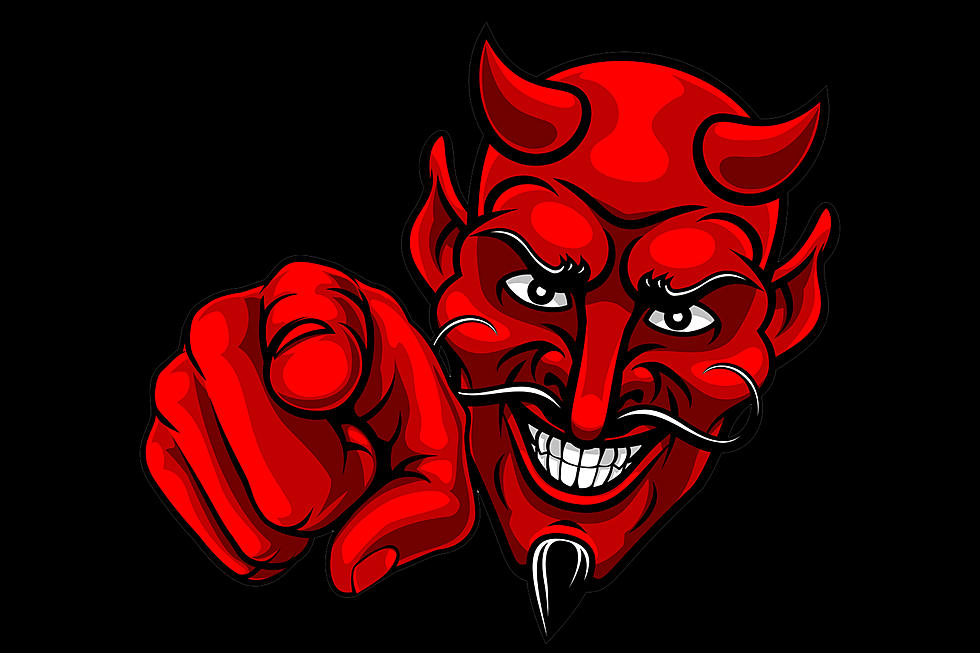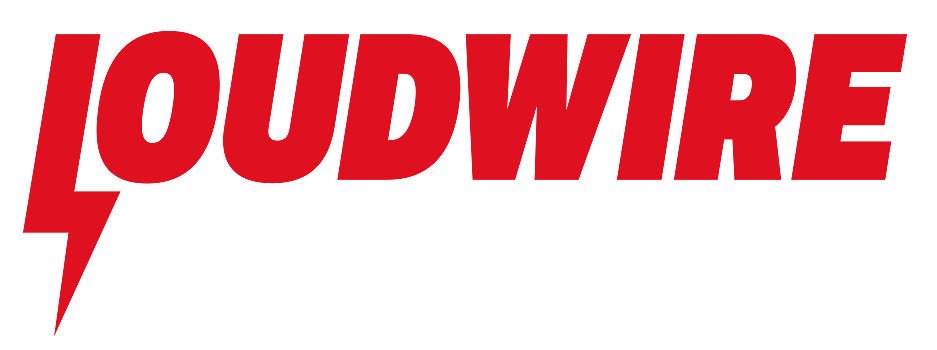
Where Did Rock + Metal’s ‘Devil Horns’ Hand Gesture Come From?
Where did the "devil horns" hand gesture originate? Who invented it?
The sign of the horns, also known as devil horns or metal horns, is ubiquitous in heavy metal, hard rock and beyond. Music fans, especially concertgoers, come across it frequently. They throw it up themselves in return, the expression passing from one group of listeners to the next. But where did it come from?
It turns out that tracking down a source for the symbol can get murky, especially since the hand sign itself has a history that precedes heavy music.
But wait, some readers might think, I thought Ronnie James Dio first flashed the devil horns. But is that right? Or was it Black Sabbath's Geezer Butler who brought the gesture to early metal? Maybe Gene Simmons trying to trademark a version of the horns in 2017 had some giving KISS' The Demon the claim.
Yet, it would appear that the devil-horned truth goes beyond any of those musicians. Though that's not to say those performers' championing of the gesture didn't help popularize it in music.
Regardless, we wanted to know the honest truth about the devil horns. Who started the gesture? Is there an artist or band that can legitimately take credit for first making the hand motion in rock and metal?
The Origin of the Devil Horns
To get anthropological, one should know that the hand gesture metalheads identify as the devil horns can mean other things to different cultures and religions. If you're in Italy and you extend your index and little fingers while holding the others with your thumb, a local might think you're trying to ward off bad luck — or insult them, as CNN has documented. It can be regarded as an offensive sign elsewhere in the world, as well.
And the gesture's history extends further still, especially in a spiritual capacity. The irony is that the signal a metal fan makes to indicate some mix of loud music, hedonism and possibly devil worship often is used to expel demons in Buddhism (the Karana Mudra). It's yoga's Apana Mudra, said to bring health and strength or even clear up gas and indigestion.
There are other examples now — it's the Texas Longhorns' "Hook 'Em Horns," it's an emoji. The point is the physical gesture itself was used long before it was tied to metal or even music. That said, the horns symbol is not precisely the same as those ritual motions, where the middle and ring fingers lightly touch the tip of the thumb. With the horns, the thumb typically covers one or more of the fingernails.
But that's not what we really want to know, is it? We want to know if an artist or band can lay claim as the horns' originator in music. Alas, that's where the conversation between a handful of rockers about the gesture's provenance can make things blurry. Still, if one carefully looks over the available info, it's doesn't seem too difficult to conclude who likely threw 'em up first.
Dio, Gene and Geezer
To reach a confident conclusion on who invented music's devil horns, however, one must weed through the list of artists attached as its inventor over the years. (Amazingly, even The Beatles have skin in this game.) As plenty of metalheads are no doubt aware, that list almost always starts with Ronnie James Dio.
In his lifetime, though, Dio played it down.
"I doubt very much if I would be the first one who ever did that," Dio told Metal-Rules.com in 2001. "That's like saying I invented the wheel, I'm sure someone did that at some other point. I think you'd have to say that I made it fashionable. I used it so much and all the time and it had become my trademark until the Britney Spears audience decided to do it as well. So it kind of lost its meaning with that."
That seems quite the sensible statement from the late Dio and Black Sabbath singer. Plus, it shows that the rocker most often connected to the metal horns was well aware it had infiltrated pop music (and thereby, pop culture at large) by the turn of the millennium.
But back in 1979, according to a retelling of the legend by The Florida Times-Union, Dio wanted a signal that would differentiate him from the departing Ozzy Osbourne when he replaced the singer in Sabbath. Ozzy was known for holding up double peace signs, so Dio started doing dual devil horns on stage with the band.
The rest, as they say, is history. But if Dio didn't claim to have invented the devil horns, is there someone else who does? The most visible suggestion of that of late is probably the one from Simmons, the KISS icon and businessman who made headlines attempting to trademark it. But the plain and simple fact is that the symbol he was trying to harness legal power over isn't the devil horns, but the American Sign Language sign for "I love you." (Yes, the two are very close.)
Then there's Butler, the Black Sabbath bassist who just this year said he was the one who showed Dio the devil horns in the first place. There's a 1969 band photo of Sabbath floating around with Butler flashing the sign, although it's tough to track down what, if any, materials the image appeared on at the time. After the fact, listeners were said to have found it in the liner notes of a 2002 CD retrospective, Symptom of the Universe: The Original Black Sabbath 1970-1978.
For his part, Dio maintained that the devil horns "was [a] symbol that I thought was reflective of what that band was supposed to be all about."
He added, pointing to its incorporeal origins, "It's NOT the devil's sign like we're here with the devil. It's an Italian thing I got from my grandmother … to ward off the evil eye or to give the evil eye, depending on which way you do it. It's just a symbol but it had magical incantations and attitudes to it and I felt it worked very well with Sabbath. So I became very noted for it and then everybody else started to pick up on it and away it went. But I would never say I take credit for being the first to do it. I say because I did it so much that it became the symbol of rock 'n' roll of some kind."
Who Started the Devil Horns?
So then, who started it? Again, the duplicity of the devil horns rears its head. Dio's family used the symbol to keep evil away. But the most likely early instigator of the devil horns' popularity in heavy metal, the occult-driven '60s and '70s rock act Coven, seemed bent on using the devil horns for the devil's purpose.
It might seem silly now, but if you take Coven's 1969 debut Witchcraft Destroys Minds and Reaps Souls at face value, the Chicago-based doom rockers' primary aim was indeed to spread the word of Satan. Of particular note is that the Mercury Records album's opening song is called "Black Sabbath," and that — here we go — some of the band members are blatantly holding up the devil horns on the back cover.
"With the 'evil' prayers during 'Coven in Charing Cross,'" AllMusic's Joe Viglione writes of Witchcraft's music itself, "Coven get a bit heavy-handed; the group goes over the top trying to push the black magic stuff. 'Pact With the Devil' is written 'Pack With the Devil' on the label, and the 13-plus minute 'Satanic Mass' is more of a curiosity piece than [a] musical adventure."
The tunes notwithstanding, in 2017, Coven threatened to take legal action against Simmons if he insisted on continuing his trademark bid. Coven claimed the devil horns hand sign was "grandfathered in" for the band, saying they'd been photographed doing the gesture as far back as 1967.
Witchcraft and the Devil Horns
To wrap things up, it looks like Coven have the best claim for being heavy metal's devil horns originators. Doing the math isn't hard — Black Sabbath, newly formed in 1968, were still called Earth until August 1969, when they changed their name to the more famous moniker. Coven's Witchcraft came out that same summer, and, again, the opening track of the doomy prog and psych-rock set is titled "Black Sabbath."
Not to mention, what happened to Simmon's trademark quest after Coven got involved? He dropped it.
Still, the feeling of mystery surrounding the sign of the horns will probably never go away. It might even be why the symbol still feels so powerful when concertgoers hoist their arms and make the motion at rock and metal concerts all over the world.
So the next time you toss up the gesture — and it could be soon, with many festivals and events coming back this summer after a concert-less 2020 — remember the wicked witch rockers who most probably gave life to the storied devil horns.
Horns up!
15 Artists Associated With Witchcraft, Satanism + the Occult
More From Loudwire









